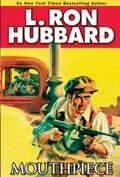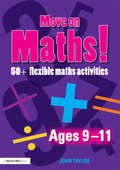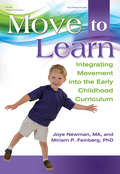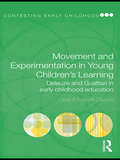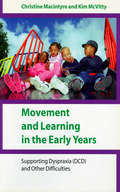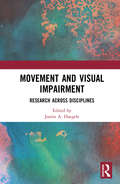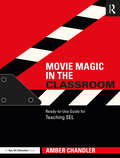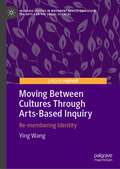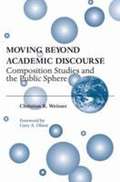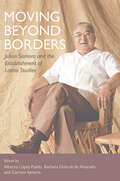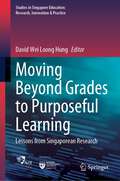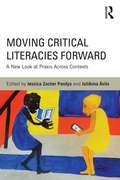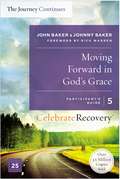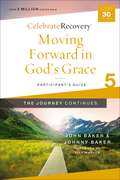- Table View
- List View
Mouthpiece
by L. Ron HubbardUnlock your inner Sherlock. It had been a long time since Mat Lawrence went to the city. Only something urgent could take him from his job deep in the desert managing construction of a mammoth power dam . . . something as urgent and shocking as the grisly murder of his father. His father dying wasn't a complete surprise to him; the old man was a big-time gangster. Straight-laced and hard-working, Mat had wanted nothing to do with such vices. But he does share at least one family trait, a temper that propels him to exact revenge in the traditional family style.And so, with the "help" of his father's fast-talking criminal attorney, Mat goes after the culprits. But bullets, lies and bedlam follow when he finds himself neck-deep in trouble trying to single-handedly track down his father's killers and a million dollars gone missing. ALSO INCLUDES THE MYSTERY STORIES "FLAME CITY", "CALLING SQUAD CARS" AND "THE GREASE SPOT""...is pure entertainment from first page to last with that L. Ron Hubbard touch giving this tale an enduring reading engagement from beginning to end." --Midwest Book Review
Move On Maths Ages 9-11: 50+ Flexible Maths Activities (Move on Maths!)
by John TaylorMove on Maths! offers versatile, tried and tested maths resources for nine to eleven years for you to use in the way that is most suitable for your pupils. The units give you flexible ideas, rather then prescriptive lessons and support the Renewed Primary Framework for mathematics. The PNS Framework objectives are clearly shown for every sheet, followed by unit learning outcomes, so it’s easy to choose the right worksheet to suit you and your children’s needs. contains more than fifty stand-alone photocopiable units in four strands to be used in class or as homework tasks, complete with teachers' notes and answers to help your planning broadens understanding of four key numeracy strands from the Renewed Primary Framework: Using and applying mathematics; Understanding Shape; Measuring; Handling Data contains a bank of short, sharp exercises, problems and fun starter activities and games to kick start your maths lesson with the whole class includes challenges to extend your gifted and talented learners or early finishers covers PNS Framework objectives and learning outcomes for a two year span, Year 5 and 6 ideal for mixed-age classes.
Move On Maths! Ages 7-9: 50+ Flexible Maths Activities (Move on Maths!)
by John TaylorMove on Maths! offers versatile, tried and tested maths resources for 7-9 years for you to use in the way that is most suitable for your pupils. The units give you flexible ideas, rather then prescriptive lessons and support the Renewed Primary Framework for mathematics. The PNS Framework objectives are clearly shown for every sheet, followed by unit learning outcomes, so it’s easy to choose the right worksheet to suit you and your children’s needs. Contains more than fifty stand-alone photocopiable units in four strands to be used in class or as homework tasks, complete with teachers' notes and answers to help your planning Broadens understanding of four key numeracy strands from the Renewed Primary Framework: Using and applying mathematics; Understanding Shape; Measuring; Handling Data Contains a bank of short, sharp exercises, problems and fun starter activities and games to kick start your maths lesson with the whole class Includes challenges to extend your gifted and talented learners or early finishers Covers PNS Framework objectives and learning outcomes for a two year span, Year 3 and 4 Ideal for mixed-age classes
Move Your Bus: An Extraordinary New Approach to Accelerating Success in Work and Life
by Ron ClarkNew York Times bestselling author and award-winning educator Ron Clark applies his successful leadership principles to the business world in this effective and accessible guidebook, perfect for any manager looking to inspire and motivate his or her team. Includes a foreword by bestselling author and FranklinCovey executive Sean Covey.Teamwork is crucial to the success of any business, and as acclaimed author and speaker Ron Clark illustrates, the members of any team are the key to unlocking success. Imagine a company as a bus filled with people who either help or hinder a team’s ability to move it forward: drivers (who steer the organization), runners (who consistently go above and beyond for the good of the organization), joggers (who do their jobs without pushing themselves), walkers (who are just getting pulled along), and riders (who hinder success and drag the team down). It’s the team leader’s job to recognize how members fall into these categories, encourage them to keep the “bus” moving by working together, and know when it’s time to kick the riders off. In the tradition of Who Moved My Cheese? and Fish!, Move Your Bus is an accessible and uplifting business parable that illustrates Clark’s expert strategies to maximize the performance of each member of a team. These easy to implement techniques will inspire employees and team leaders alike to work harder and smarter and drive the organization to succeed.
Move to Learn
by Caroline ScottMasses of activities based on the premise that movement, particularly if it is specific and intentional, enhances learning. "Move to Learn" is a movement programme for children aged five to eight years, delivered in sessions, working one-to-one with an adult or as a small group. Use the programme to liven up a day, provide a 'brain break' in the curriculum or as a complete change for a pupil who is having an emotionally challenging day. Moving promotes learning and other outcomes will follow: Emotional - encouraging happy, secure, confident, motivated and positive emotional states in the limbic system of the brain to support a sense of well-being; Cognitive - using movement to create and strengthen neural pathways, to integrate brain activity and develop 'whole brain' learning; Motor - enabling children to develop their gross and fine motor skills, and to understand being active or calm and to know the difference; Social - using activities to have fun and play together, and to interact and build good relationships; and, Language - to encourage good listening skills and attending to instructions, and to learn to use self-talk to mediate learning. The activities are arranged in ten sections to address different types of movement: Stamina; Large motor actions; Mobility; Balance; Body awareness; Spatial awareness; Dexterity; Fine motor skills; Rhythm and sequence; and, Relaxation. This title includes six sample lesson plans and forms for children's evaluation, parents' evaluation, teachers' questionnaire and parents' questionnaire.
Move to Learn: Integrating Movement into the Early Childhood Curriculum
by Joye Newman Ma Miriam P. FeinbergWhen we imagine happy young children, we picture exuberant and unbridled movement. Not only is movement natural, it is also necessary for optimal physical, cognitive, emotional, and social development. Moving children are developing children. With Move to Learn, it is easy to turn your classroom into an environment that encourages movement experiences rich in sensory, perceptual, and visual-motor experiences.Through simple strategies and activities, Move to Learn seamlessly integrates fine and gross motor-skill development across the early childhood curriculum:Language and LiteracyMathematicsScienceSocial StudiesCreative RepresentationSocial SkillsWith most activities listed in order of difficulty, choosing the right one for your class is easy! Regardless of the number of children, the physical size of your classroom, or the quality or quantity of equipment available to you, the ideas in Move to Learn are flexible enough to get every classroom moving.
Movement Matters: How Embodied Cognition Informs Teaching and Learning
by Edited by Sheila L. Macrine and Jennifer M. B. FugateExperts translate the latest findings on embodied cognition from neuroscience, psychology, and cognitive science to inform teaching and learning pedagogy.Embodied cognition represents a radical shift in conceptualizing cognitive processes, in which cognition develops through mind-body environmental interaction. If this supposition is correct, then the conventional style of instruction—in which students sit at desks, passively receiving information—needs rethinking. Movement Matters considers the educational implications of an embodied account of cognition, describing the latest research applications from neuroscience, psychology, and cognitive science and demonstrating their relevance for teaching and learning pedagogy. The contributors cover a range of content areas, explaining how the principles of embodied cognition can be applied in classroom settings. After a discussion of the philosophical and theoretical underpinnings of embodied cognition, contributors describe its applications in language, including the areas of handwriting, vocabulary, language development, and reading comprehension; STEM areas, emphasizing finger counting and the importance of hand and body gestures in understanding physical forces; and digital learning technologies, including games and augmented reality. Finally, they explore embodied learning in the social-emotional realm, including how emotional granularity, empathy, and mindfulness benefit classroom learning. Movement Matters introduces a new model, translational learning sciences research, for interpreting and disseminating the latest empirical findings in the burgeoning field of embodied cognition. The book provides an up-to-date, inclusive, and essential resource for those involved in educational planning, design, and pedagogical approaches. ContributorsDor Abrahamson, Martha W. Alibali, Petra A. Arndt, Lisa Aziz-Zadeh, Jo Boaler, Christiana Butera, Rachel S. Y. Chen,Charles P. Davis, Andrea Marquardt Donovan, Inge-Marie Eigsti, Virginia J. Flood, Jennifer M. B. Fugate, Arthur M. Glenberg, Ligia E. Gómez, Daniel D. Hutto, Karin H. James, Mina C. Johnson-Glenberg, Michael P. Kaschak, Markus Kiefer, Christina Krause, Sheila L. Macrine, Anne Mangen, Carmen Mayer, Amanda L. McGraw, Colleen Megowan-Romanowicz, Mitchell J. Nathan, Antti Pirhonen, Kelsey E. Schenck, Lawrence Shapiro, Anna Shvarts, Yue-Ting Siu,Sofia Tancredi, Chrystian Vieyra, Rebecca Vieyra, Candace Walkington, Christine Wilson-Mendenhall, Eiling Yee
Movement and Dance in Early Childhood (Zero to Eight)
by Mollie Davies`This original and fascinating approach to children′s movement development is highly recommended reading for tutors, practitioner and students alike′ - Under Five `Movement and Dance in Early Childhood offers a clear and accessible entry into the world of movement and dance and the possibilities that exist for children, their families and the wider educational community′ - Every Child `Eminently readable and accessible. Whether the reader is versed in movement understanding or a beginner, by the end of the book they should be a much better movement observer, teacher and handler′ - Marion North, Principal and Chief Executive, Laban Centre for Movement and Dance In this unique and innovative book on movement and dance development from birth to eight years, the author draws on her depth of knowledge and practical experience in helping children to become skilled, creative and imaginative in a wide range of movement-oriented activities. The book seeks to help early childhood educators and parents in very practical ways and provides guidance based on a sound theoretical understanding. Originally published as Helping Children Learn Through a Movement Perspective, this book has been updated in the light of recent research. The author extends her investigation of how young children learn in and through movement. There is an expanded chapter on dance, which suggests strategies for working with young children and examines ways in which young children take on the roles of dance-makers, performers and appreciators. An additional chapter shows ways in which the expressive and artistic aspects of children′s movement can be appropriately located and includes exemplars for dance at Key Stage 1 and the early phases of Key Stage 2.
Movement and Experimentation in Young Children's Learning: Deleuze and Guattari in Early Childhood Education (Contesting Early Childhood)
by Liselott Mariett OlssonIn contemporary educational contexts young children and learning are tamed, predicted, supervised, controlled and evaluated according to predetermined standards. Contesting such intense governing of the learning child, this book argues that the challenge to practice and research is to find ways of regaining movement and experimentation in subjectivity and learning. Vivid examples from Swedish preschools – involving children, teachers, teacher students and educators and researchers - are woven together with the theories of French philosophers Gilles Deleuze and Félix Guattari, bringing important new concepts and practices to the early childhood field. This ground-breaking book investigates three key areas: the need to focus on ‘process’ rather than ‘position’, as positioning of any kind, such as learning goals or developmental stages, hampers movement. working with methods that recognise science’s inventiveness and productivity, demonstrating how the events in which children take part can remain open ended and in movement. Re-considering the dichotomy between the individual and society as a ‘cause and effect’ relationship, which immobilizes subjectivity and learning and hinders experimentation. Challenging dominant ways of thinking, Movement and Experimentation in Young Children's Learning offers new possibilities for change and provokes a re-evaluation of the educational system’s current emphasis on predetermined outcomes and fixed positions. This book provides researcher and students with a sound theoretical framework for re-conceptualising significant aspects of movement and experimentation in early childhood. Its many practical illustrations make this a compelling and provocative read for and student taking course in Early Childhood Studies.
Movement and Learning in the Early Years: Supporting Dyspraxia (DCD) and Other Difficulties
by Christine Macintyre Kim McVitty`This book achieves what it sets out to do - provide clear guidance to parents and professionals on key aspects of movement in the early years. The book however does more than that - it emphasises that movement in the early years is not the territory of experts, but through the use of this book, the assessment of movement development of activities and programmes are within the range of all - class teachers and parents. I strongly recommend that this book is available in every school′ - Educational Review `This book provides a good overview of issues in movement and development and learning, and will stimulate the interested reader to explore this topic further′ - Early Years `This book will be a useful addition to any primary staff room bookshelf. It is a practical book based on sound theory. It will provide ideas for the non-specialist teacher and for parents anxious to help. The suggestions will provide a good framework for the staged assessment and support for young children for whom there is a cause for concern′ - Support for Learning `For anyone involved in the development of any young child, this should be essential reading. The book is very informative and readable by parents, teachers and students and is simply illustrated with case studies′ - Dyslexia Contact `As a behaviour advisory teacher I will certainly be influenced by reading this, and I know our local occupational therapists would be overjoyed if she knew all teachers read books like this′ - Special Children `It is always good to be able to welcome a book on such a key factor as movement in early childhood development, and this text has been written to support parents and practitioners who wish to understand how movement contributes to all aspects of learning -intellectual, social and emotional, as well as physical′ - Marian Whitehead, Nursery World `This book is an excellent introduction for anybody trying to understand how movement affects child development. It clearly explains the importance movement has on how young children learn and feel. The information and insights in this book can be found elsewhere but I have yet to find such breadth and depth of information on supporting children with movement difficulties as clearly written and accessible as this book′ - Spare-Chair `The book is very informative and readable by parents, teachers and students and amply illustrated with case studies′ - Judith Stansfield, SEN ICT Consultant Movement is a key factor in young children′s development and it can affect how they learn and how they feel. Do you work with young children who have difficulties in this area? This book shows you how to observe a child as they move to allow for early identification of any problem and then tells you how to help. Dyspraxia (DCD) is on the increase in young children and less confident and easy movement can play a part in other specific learning difficulties such as dyslexia, attention deficit disorder (ADD) and with hyperactivity (ADHD). Included is advice on: } observing, analyzing and assessing movement development } building confidence } helping with handwriting } supporting mathematical development Why not ask the child to pop bubble paper as one way of promoting finger awareness? Carefully taught activities can be easy to plan and fun to carry out and there are lots of suggested activities set out in the book. Early years practitioners in nurseries, schools, playgroups and EYDCPs will find this book clear and useful; it also offers advice to parents. Christine Macintyre was formerly Senior Lecturer at Edinburgh University and is now a freelance consultant. Kim McVitty is a nursery school teacher.
Movement and Visual Impairment: Research across Disciplines
by Justin A. HaegeleThis is the first book to offer an in-depth review of research pertaining to individuals with visual impairments across the full span of movement-related disciplines, from biomechanics and motor learning to physical education and Paralympic sport. Each chapter highlights current research trends, future research directions, and practical implications in a key discipline or area of professional practice, drawing on empirical research evidence and opening up new avenues for cross-disciplinary working. Covering physical activity across the life course, from children and young people through to older adults, and addressing the important topic of deafblindness in some depth, the book goes further than any other book published to date on visual impairment and movement. This is essential reading for all advanced students and researchers working in sport, exercise and disability, and an invaluable reference for practitioners and service providers, from in-service teachers and camp directors to physical therapists and physical activity promotion specialists.
Moves for Launching a New Year of Student-Centered Coaching
by Julie Steele Diane Sweeney Leanna S. HarrisEngaging teachers in coaching is an ongoing process that requires planning and intentionality. Whether you are new to a school or have been there a while, the beginning of the year brings forth the opportunity to envision what your work will look like and how you will deepen the impact it makes on teacher and student learning. Start the Year Strong with Student-Centered Coaching Designed to ensure a successful start to the school year, this guidebook provides strategies for coaches, principals, and district leaders to successfully launch a new year of Student-Centered Coaching. Organized into fifteen moves, this resource provides: Concrete ideas for how coaches can connect with new and returning teachers Strategies for supporting teachers to increase student engagement and build classroom community Steps for building strong principal and coach partnerships that will last throughout the year Tools and artifacts that can be used to message and market coaching Ideas for scheduling coaching that is flexible and meets teachers’ needs Videos and other resources that dig deeper into each of the fifteen coaching moves that are included By investing carefully in the first few weeks of school and crafting a clear plan with this guidebook, the foundation you build will support your work far beyond the start of the school year.
Moves for Launching a New Year of Student-Centered Coaching
by Julie Steele Diane Sweeney Leanna S. HarrisEngaging teachers in coaching is an ongoing process that requires planning and intentionality. Whether you are new to a school or have been there a while, the beginning of the year brings forth the opportunity to envision what your work will look like and how you will deepen the impact it makes on teacher and student learning. Start the Year Strong with Student-Centered Coaching Designed to ensure a successful start to the school year, this guidebook provides strategies for coaches, principals, and district leaders to successfully launch a new year of Student-Centered Coaching. Organized into fifteen moves, this resource provides: Concrete ideas for how coaches can connect with new and returning teachers Strategies for supporting teachers to increase student engagement and build classroom community Steps for building strong principal and coach partnerships that will last throughout the year Tools and artifacts that can be used to message and market coaching Ideas for scheduling coaching that is flexible and meets teachers’ needs Videos and other resources that dig deeper into each of the fifteen coaching moves that are included By investing carefully in the first few weeks of school and crafting a clear plan with this guidebook, the foundation you build will support your work far beyond the start of the school year.
Movie Magic in the Classroom: Ready-to-Use Guide for Teaching SEL
by Amber ChandlerMovies belong in the curriculum—and not just the day before a holiday. This book by award-winning educator Amber Chandler shows why films are so important for teaching social emotional learning and critical thinking. She provides complete guides to ten current, age-appropriate movies; each guide features a pre-viewing activity, a stop-and-chat guide for you so you know when to pause for discussion, a student notes sheet, and discussion questions with varying formats. The book also offers handy tools such as blank templates and permissions forms for communication with parents.Every movie addresses some aspects of CASEL’s SEL Competencies: Self-Awareness, Self-Management, Responsible Decision-Making, Relationship Skills, and Social Awareness. Amber Chandler does all the prep work for you, so you can lean into the movie experience and share this opportunity with your students, putting movie magic to work!
Moving Abroad For Dummies
by Kristin M. WilsonExpert guidance for anyone who wants to settle down in another country Moving Abroad For Dummies is for anyone contemplating pulling the trigger on moving out of their homeland for a short time or for good. Be it to enhance a career, retire more comfortably on savings, or find a culture that's a better fit for you, relocating abroad takes some planning to be done right. This book walks you through all the considerations and the steps you'll need to take to make it happen. Author Kristin Wilson is a relocation expert with over 20 years of experience both living abroad and helping hundreds of others do the same. In this confusion-clearing guide, she offers must-know information on planning a move, getting affairs in order before hitting the road, and settling into your new home. Find out whether becoming an expat is the right move for you Learn how to budget for your new life, find a home abroad, and handle culture shock Become a permanent resident of your new country of choice Decide whether and when to return home At every stage of the moving abroad process—decision making, preparation, and adjustment to a new culture—this clear and easy-to-read Dummies guide has your back.
Moving Abroad: Risks and Rewards Searching for an Academic Life Far Away
by Kerstin Tomiak Ruairidh J BrownThis book investigates a different way to gain academic job experience and start an academic career. With universities training more PhD candidates than there are academic jobs, the academic job market, particularly in the social sciences and humanities, is somewhat broken. A possibility for young PhD graduates and early career researchers to gain job experience in an ever more competitive job market is leaving their home countries and taking a job far from home. Academics move from the countries of the so-named global South to Europe and the USA, from the USA to Europe and vice versa, and increasingly also from the so-called "western World“ to Asia, Africa, and the Middle East. Grounded in the personal experience of the editors and the chapter contributors, the book argues that there are more ways into academia and than the traditional route. Gathering the experiences of academics who have been moving to work in foreign places, among them Pakistan, Poland, China, the United Kingdom, Afghanistan, Portugal, and New Zealand, the book offers diverse and rich perspectives on academic mobility. What awaits the moving academic abroad, how to prepare for this move and what are the challenges and rewards in the foreign classrooms are questions the chapter contributors and editors reflect upon, ultimately wishing to help others decide whether to take this jump into the unknown.
Moving Between Cultures Through Arts-Based Inquiry: Re-membering Identity (Palgrave Studies in Movement across Education, the Arts and the Social Sciences)
by Ying WangThis book is an exploration of the concept of in-betweenness, as it occurs within the process of moving between the author’s root culture and adopted culture, from her perspective as an immigrant creative arts therapist. Through the critical autoethnographic voice and a/r/tographic inquiry, she introduces a unique exploration site within the process of Guqin-making, an ancient Chinese art form. Through the creation of images and poetry, and through Guqin-making and music-making/playing, the book expands the discussion of in-betweenness by re-theorising ancient Chinese philosophical perspectives on harmonic space. This contribution to arts-based research provides a unique standpoint to explore research methods of moving, walking, making, resting and awakening. It showcases how other researchers can transfer the invisible and intangible embodied feelings, memories and emotions arising from moving between two or more cultures into visible and tangible images, narrative, poetry, craft and music-playing to conduct powerful, interdisciplinary arts-based research.
Moving Beyond Academic Discourse: Composition Studies And The Public Sphere
by Christian R. WeisserMoving student writing beyond academic discourse and into larger public spheres is a difficult task, but Christian R. Weisser’s study challenges composition instructors to do just that. This highly accessible book does what no other study has attempted to do: place the most current, cutting-edge theories and pedagogies in rhetoric and composition in their intellectual and historical contexts, while at the same time offering a unique, practical theory and pedagogy of public writing for use both inside and outside of the classroom. By positing a theory of the public for composition studies, one which envisions the public sphere as a highly contested, historically textured, multilayered, and sometimes contradictory site, Weisser offers a new approach to the roles that compositionists might assume in their attempts to initiate progressive political and social change. After first providing a historical context that situates composition’s recent interest in public writing, Weisser next examines recent theories in composition studies that consider writing an act of social engagement before outlining a more complex theory of the public based on the work of Jürgen Habermas. The resulting re-envisioning of the public sphere expands current conversations in rhetoric and composition concerning the public. Weisser concludes with a holistic vision that places greater political and social import on addressing public issues and conversations in the composition classroom and that elucidates the role of the public intellectual as it relates specifically to compositionists in postmodern society.
Moving Beyond Borders: Julian Samora and the Establishment of Latino Studies (Latinos in Chicago and Midwest)
by Alberto Lopez PulidoMoving Beyond Borders examines the life and accomplishments of Julian Samora, the first Mexican American sociologist in the United States and the founding father of the discipline of Latino studies. Detailing his distinguished career at the University of Notre Dame from 1959 to 1984, the book documents the history of the Mexican American Graduate Studies program that Samora established at Notre Dame and traces his influence on the evolution of border studies, Chicano studies, and Mexican American studies. Samora's groundbreaking ideas opened the way for Latinos to understand and study themselves intellectually and politically, to analyze the complex relationships between Mexicans and Mexican Americans, to study Mexican immigration, and to ready the United States for the reality of Latinos as the fastest growing minority in the nation. In addition to his scholarly and pedagogical impact, his leadership in the struggle for civil rights was a testament to the power of community action and perseverance. Focusing on Samora's teaching, mentoring, research, and institution-building strategies, Moving Beyond Borders explores the legacies, challenges, and future of ethnic studies in United States higher education. Contributors are Teresita E. Aguilar, Jorge A. Bustamante, Gilberto Cárdenas, Miguel A. Carranza, Frank M. Castillo, Anthony J. Cortese, Lydia Espinosa Crafton, Barbara Driscoll de Alvarado, Herman Gallegos, Phillip Gallegos, José R. Hinojosa, Delfina Landeros, Paul López, Sergio X. Madrigal, Ken Martínez, Vilma Martínez, Alberto Mata, Amelia M. Muñoz, Richard A. Navarro, Jesus "Chuy" Negrete, Alberto López Pulido, Julie Leininger Pycior, Olga Villa Parra, Ricardo Parra, Victor Rios, Marcos Ronquillo, Rene Rosenbaum, Carmen Samora, Rudy Sandoval, Alfredo Rodriguez Santos, and Ciro Sepulveda.
Moving Beyond Grades to Purposeful Learning: Lessons from Singaporean Research (Studies in Singapore Education: Research, Innovation & Practice #5)
by David Wei Loong HungThis book explores future directions in Singaporean education as it moves beyond its historically formative goals of survival, efficiency and performance, and its emphasis on grades and formal credentialing. It examines the future of education via the 4Life framework, a four-form model for purposeful learning centered around social-emotional regulation and the well-being of the individual learner: Life-long learning, the learning that occurs over a learner's lifespan; Life-deep learning, a deep understanding of learned content and adaptive expertise; Life-wide learning, learning in multiple contexts besides the school environment; and Life-wise learning, learning which focuses on the learner's values, morals, character and historical empathy. This book also illustrates how purposeful learning serves to equip learners with the knowledge, skills, dispositions and competencies they need to thrive as adaptive workers in the economy of the future.
Moving Critical Literacies Forward: A New Look at Praxis Across Contexts
by Jessica Pandya JuliAnna ÁvilaTaking the pulse of current efforts to do—and, in some cases, undo—critical literacy, this volume explores and critiques its implementation in learning contexts around the globe. An impressive set of international authors offer examples of productive critical literacy practices in and out of schools, address the tensions and gaps between these practices and educational policies, and attempt to forecast the future for critical literacy as a movement in the changing global educational policy landscape. This collection is unique in presenting the recent work of luminaries such as Allan Luke and Hilary Janks alongside relative newcomers who use innovative approaches and arguments to reinvigorate and redefine critical practice. It is time for this cutting-edge inquiry into the state of critical literacy—not only because is it a complex and ever-evolving field, but perhaps more important, because it offers a reaction to, and powerful reworking of, standardization and high-stakes accountability measures in educational contexts around the globe.
Moving Forward in God's Grace: A Recovery Program Based on Eight Principles from the Beatitudes
by John Baker Johnny BakerA Program for Implementing a Christ-Centered Recovery Ministry in Your Church Alcoholism - Divorce - Sexual Abuse - Codependency - Domestic Violence - Drug Addiction - Sexual Addiction - Food Addiction - Gambling Addiction and others. There is a way the church can help the hurting move beyond their wounds to experience the healing and forgiveness of Christ. Since 1991, more than 200,000 people have participated in the Celebrate Recovery programs offered at more than 3,500 churches, prisons, and rescue missions. Drawn from the Beatitudes, Celebrate Recovery helps people resolve painful problems in the context of the church as a whole.
Moving Forward in God's Grace: A Recovery Program Based on Eight Principles from the Beatitudes (Celebrate Recovery)
by John Baker Johnny BakerCelebrate Recovery introduces The Journey Continues—four new participant&’s guides designed as a revolutionary, new second step study curriculum. This step study is taken after completing The Journey Begins (Participant Guides 1-4). In the six lessons in Guide 5: Moving Forward in God's Grace, you will experience Christ-centered and biblically based studies filled with brand new acrostics, deeper questions, and more helpful Bible verses. The content in Guide 5 will focus on a deeper study of the first 3 of 8 recovery principles:Realize I&’m not God. I admit that I am powerless to control my tendency to do the wrong thing and that my life is unmanageable. "Happy are those who know they are spiritually poor" (Matthew 5:3).Earnestly believe that God exists, that I matter to Him, and that He has the power to help me recover. "Happy are those who mourn, for they shall be comforted" (Matthew 5:4).Consciously choose to commit all my life and will to Christ&’s care and control. "Happy are the meek" (Matthew 5:5).By working through the lessons and exercises found in each of the four participant's guides of The Journey Continues you will find a deeper sense of true peace and serenity, continue to restore and develop stronger relationships with others and with God, and find deeper freedom from life's hurts, hang-ups, and habits.
Moving Forward in Mid-Career: A Guide to Rebuilding Your Career after Being Fired or Laid Off
by John Henry WeissLosing a job is one of the most devastating events one can experience. For trauma, it ranks up there with divorce, loss of a loved one, or permanent personal injury, and it happens more often that one would think. According to the Bureau of Labor Statistics, approximately 50,000 workers are fired or laid off each day. That is over 18,000,000 workers each year. Moving Forward in Mid-Career is a guide for workers who have been fired or laid off and are in process of rebuilding not only their careers, but also their personal identities independent of a job title. The main objectives of Moving Forward are: To address challenges that are unique to the mid-career job seekers, such as perceptions of overqualification and the need to keep with advances in technology To provide support and encouragement for workers who are in process of rebuilding their careers as individual contributors, as employees of small businesses or large corporations, or as founders/owners of a new business. To provide job hunting rules for workers reentering the workplace. To provide guidelines for staying up to date on competitive skills demanded by today’s workplace. To provide practical information for rebuilding wealth. By addressing the many aspects of job loss and job search, Moving Forward provides solutions for dealing with the challenges encountered at each stage of the rebuilding process, from the initial shock and humiliation to the difficult but rewarding task of rebuilding persona and seeking new employment opportunities.
Moving From Spoken to Written Language With ELLs
by Ivannia SotoMastering spoken language is the key to writing success for English language learners English language learners struggle to meet the increased classroom writing demands of the Common Core State Standards, and many schools seem at a loss for solutions. In these pages, ELL expert Ivannia Soto builds on the groundbreaking research she presented in her previous book ELL Shadowing as a Catalyst for Change to show how oral language development scaffolds writing skills. To implement this knowledge, Soto offers educators a powerful set of tools: • Exciting spoken techniques such as Socratic Seminar, Frayer model and Think-Pair-Share that build vocabulary and extend into academic writing • Approaches to teaching three essential styles of writing: argumentative, procedural, and narrative • Sample lesson plans and graphic organizer templates ELLs must develop oral language skills before meeting the Common Core’s writing requirements. This book provides the tools to make this happen. "This timely book collects oral language strategies designed to scaffold academic writing for English language learners at intermediate and advanced levels of English proficiency. Concrete examples support the goal of teaching college and career ready standards across content areas." —Charlene Rivera, Research Professor The George Washington University Center for Equity and Excellence in Education
